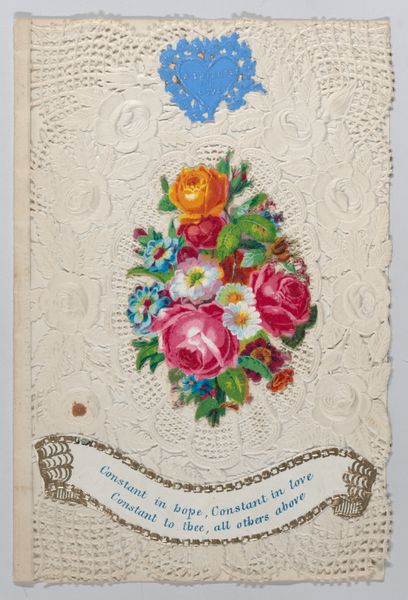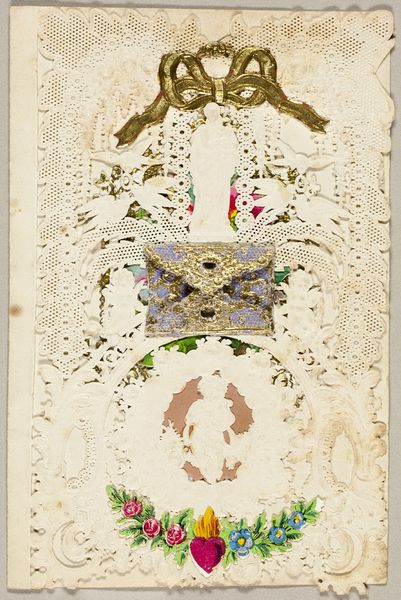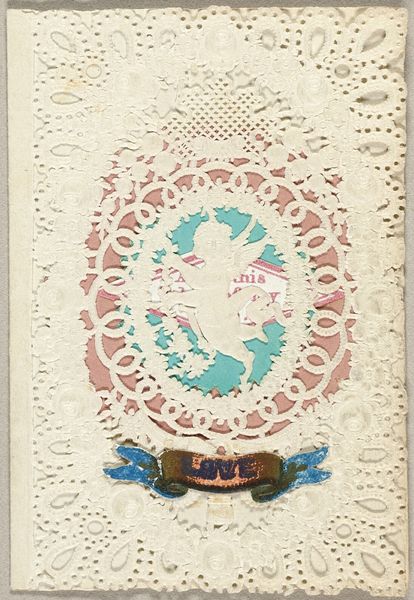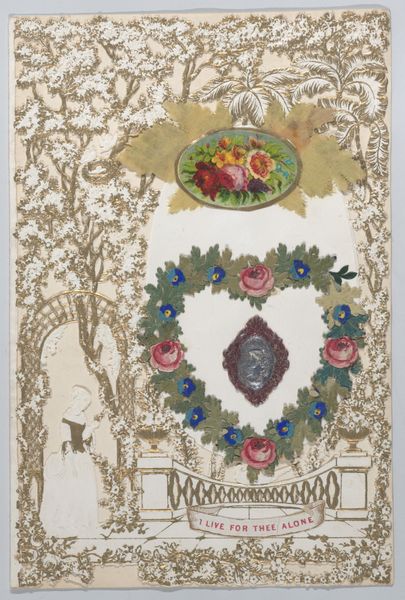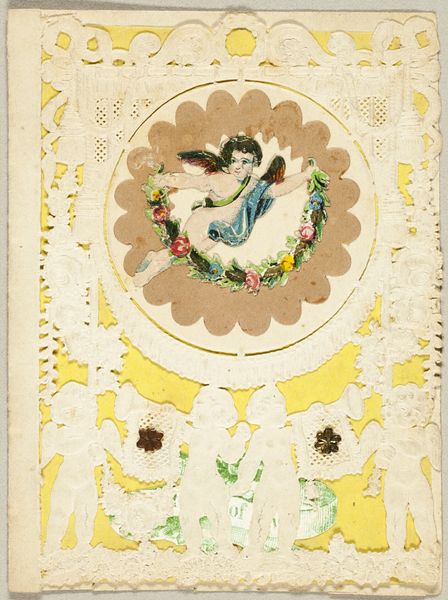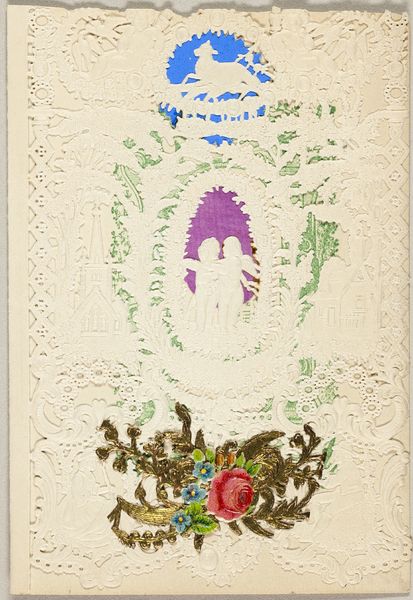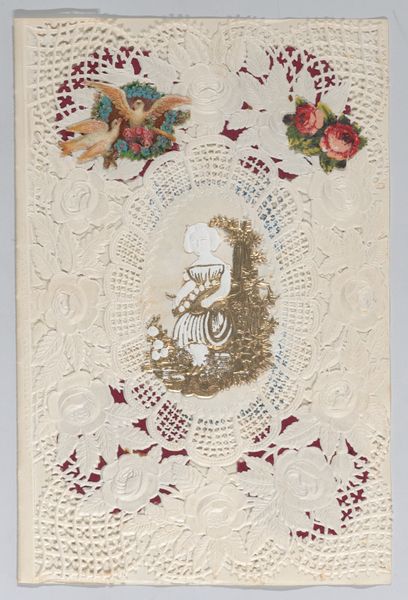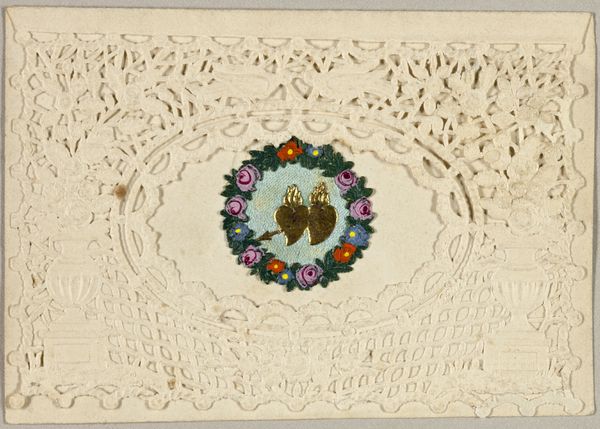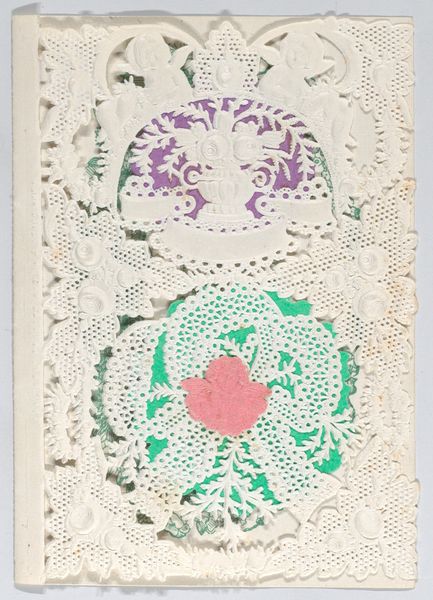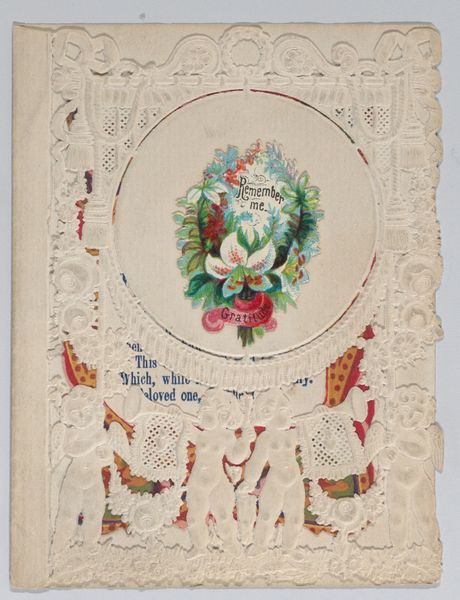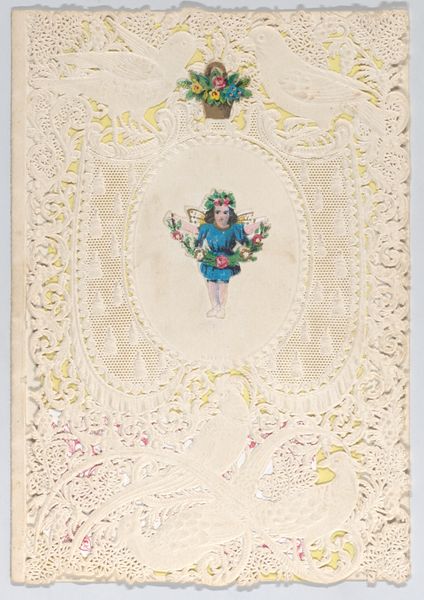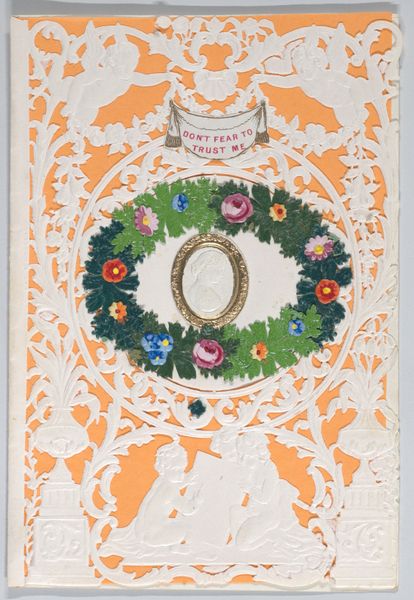
Dimensions: 92 × 72 mm (folded sheet)
Copyright: Public Domain
Editor: Here we have "My Dove (Valentine)," dating back to the 1850s, at the Art Institute of Chicago. It’s made from paper and features colored pencil, watercolor, and print techniques. It's intricate and fragile. How would you interpret this little valentine? Curator: This piece is a poignant artifact reflecting 19th-century British constructions of femininity and courtship. The delicate lacework and miniature scale signal Victorian ideals of female daintiness and domesticity. Do you see how the phrase "My Dove" operates within a broader social script? Editor: I suppose it’s a term of endearment. But does the dove signify something more specific about gender? Curator: Precisely. Doves were, and sometimes still are, associated with purity, gentleness, and submissiveness--qualities expected of women at the time. Consider also the cherubs. Their presence reinforces a sense of idealized innocence and divine sanction for romantic union, reflective of strict gender roles and expectations surrounding marriage. What does the visual construction of an ideal relationship signify for you? Editor: It feels… restrictive, like it boxes in what love could be. There's a heavy weight of social pressure embedded in such a seemingly innocent object. It's a carefully constructed performance. Curator: Exactly. It's a window into how intimacy and affection were not just felt but *performed* in accordance with societal norms, masking very different lived experiences. Editor: I see now that such an intimate object also serves a function as a historical and cultural artifact. Curator: Precisely, inviting us to critique these embedded cultural codes.
Comments
No comments
Be the first to comment and join the conversation on the ultimate creative platform.
